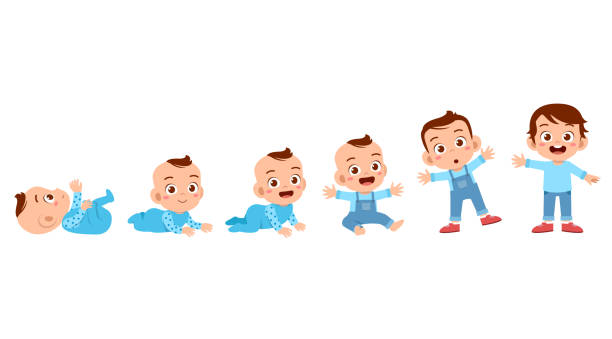Without a doubt, childhood holds great significance, as this phase shapes our behaviors, personalities, emotions, and cognitive abilities. The development of children is categorized into segments ranging from infancy to adolescence. Every segment has distinct traits and accomplishments that children attain and thereby progress forward.
From birth to around 18 months, infancy marks the initial stage of a child’s growth and development. Throughout this time, infants gradually attain the abilities to crawl, sit up, stand, walk, and speak their first words. They Also learn to coordinate their limbs and develop their senses of touch, hearing, vision, and smell. A critical aspect of this period is the dependent bond between infants and their primary caregivers, which lays the foundation for their holistic growth, including social, emotional, and cognitive development.
From 18 months to three years, the second stage of development commences: toddlerhood. In this phase, toddlers acquire independence as they develop curiosity for their environment. Their communication skills also grow, with an expanded vocabulary as compared to infancy. Additionally, they discover how to distinguish gender and race, utilize the bathroom independently, and feed themselves. Socially, toddlers take pleasure in spending time with their peers, though their caregivers remain crucial to them.
During the preschool years(3 to 6yrs), children’s bodily growth decelerates while their small muscular abilities boom. At this time, cognitive abilities advance promptly as they get acquainted with numbers, shapes, colors, and letters. Emotionally, preschoolers start to grasp their sentiments and acquire the art of expressing them appropriately. Their social existence becomes more entangled as they cultivate intricate connections with friends, siblings, and other members of the family.
Between the ages of 6 and 12, the middle phase of childhood start and it is marked by distinguishing characteristics that differ from earlier developmental stages. During this time, youngsters undergo a cognitive and physical transformation that results in their bodies reaching a more stable state and their communication abilities showing significant improvement. Children enhance their social skills, effectively interacting in different situations while gradually becoming less dependent on their guardians, instead preferring to engage in group activities and socialize with their peers. Children’s behavioral, growth, and cognitive changes are distinctive during their middle years. During this time, kids are still gradually developing their physical stature and gross motor abilities.
In between childhood and adulthood lies the time of adolescence, a time of great transformation as their bodies gear up with sexual organs and new strengths. This period is marked by a cognitive growth spurt that enables teenagers to develop their abstract thinking skills and better handle problems. Emotions are also in play, with sudden mood swings and intense feelings emerging as teens’ psychological landscape becomes more intricate. It is also a time of independence for many, as they seek to find their own path, and this new drive often clashes with authorities, such as parents.
Schedule a consultation with your child’s pediatrician if you are worried that your child is falling behind in a particular developmental stage.
